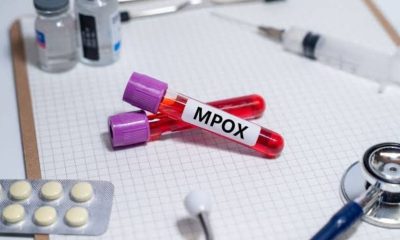

Edema: When are swollen legs, ankles and feet dangerous?
Follow Us @
Edema: When are swollen legs, ankles and feet dangerous?
– Pregnancy tips, how to remain healthy, health and wellbeing, latest symptoms and treatments.
Edema: When are swollen legs, ankles and feet dangerous?
Causes of edema


- Sitting still or standing still for a long time. When you use your legs, the large leg muscles work like a pump: they alternately press on the leg veins and lymphatic vessels, and then release. In this way, they push the blood towards the heart. When you move little, this auxiliary mechanism is no longer available.
- Heat causes the veins to expand. This makes it easier for the blood to remain standing. In very hot weather, you also move less than usual.
- Pregnancy: The large belly presses on the veins in the abdomen and slows down the reflux. In addition, the body retains more fluid.
- Some women suffer from fluid retention, especially around their menstrual period.
- Some medicines such as certain blood pressure lowering drugs, non-steroidal painkillers, estrogens and some antidiabetic drugs can lead to fluid retention.
- Swollen legs can also be a first sign of an incipient vascular disease such as varicose veins. With visible thickenings you already have superficial varicose veins. Varicose veins are caused by poorly closing valves in the veins. Other causes of edema such as heat, sitting still for a long time or pregnancy can suddenly make existing varicose veins much worse.
- Lymphedema. The lymphatic system is a system of vessels that circulates and drains lymph fluid from the body. When it cannot be drained properly, it builds up. In the early stages of the condition, the swelling disappears when the leg is elevated. Over time, the swelling increases and does not disappear at night. Often only one leg is affected.
- Heart failure. The heart pumps less well. Combined with heat and too little drinking, this type of fluid retention mainly affects old people. Then both legs are very swollen.
- Liver cirrhosis damages the liver, making it less effective. This has all sorts of consequences, including fluid retention.
- A kidney disease. The kidneys are no longer able to filter enough fluid and salt from your blood. This accumulates in the legs, among other places.
Home remedies: what can you do yourself?
- Move your legs a lot. If you have a sitting or standing job, walk around every now and then. If that is not possible, do exercises with your feet and legs. Change position regularly, and if possible put your legs up.
- Play a sport that involves a lot of leg movement, such as walking, running, cycling or swimming. Tennis, squash, aerobics and all sports that involve a lot of jumping are not as good.
- Take contrast showers: alternately spray your legs with warm (not hot) and cold water.
- Wear shoes with a low, wide heel. Avoid high heels, because they reduce the pumping function of the calf muscles. Completely flat, such as with flip-flops, is also not ideal.
- Sleep with your legs elevated to improve reflux. A footstool for office work also helps.
- Avoid being overweight.
- Avoid high temperatures from saunas, sunbeds, hot baths, epilation with hot wax or even underfloor heating.
- Drink enough.
- Wear a support stocking or a special therapeutic elastic stocking (TEK).
- Avoid wearing clothes that are too tight and that locally compress the veins, such as tight trousers, a tight belt or socks with a tight elastic band.
- If necessary, your doctor may prescribe a medicine that strengthens the blood vessel wall.
When to see a doctor?
- If a swollen leg suddenly occurs, this usually indicates a sudden blockage of a vein or lymphatic vessel. The most common cause is a deep vein thrombosis, i.e. a blood clot that blocks a vein. Usually you also have pain deep in the calf. The leg may be white and feel clammy. In that case you should see a doctor quickly.
- If you have had an operation that carries an increased risk of lymphoedema (e.g. breast cancer surgery), you should see a doctor for any changes to the skin (warm spot, painful spot, red spot) and any swelling in the affected arm or leg. People who have an increased risk of lymphoedema for other reasons should also be more vigilant.
Also read: Should you be concerned about a lump or tumor in your neck?
Source: Department of Vascular and Thoracic Surgery, Ghent University Hospital
Edema: When are swollen legs, ankles and feet dangerous?
Follow AFRILATEST on Google News and receive alerts for the main news about celebrities, soap operas, series, entertainment and more! Edema: When are swollen legs, ankles and feet dangerous?
SHARE POST AND EARN REWARDS:
Join our Audience reward campaign and make money reading articles, shares, likes and comment >> Join reward Program
FIRST TIME REACTIONS:
Edema: When are swollen legs, ankles and feet dangerous?
, click allow to follow this topic and get firsthand daily updates. please don’t be shy be the first to leave us a comment in the comment section. best pregnancy articles and all about fertility diets.
JOIN US ON OUR SOCIAL MEDIA: << FACEBOOK >> | << WHATSAPP >> | << TELEGRAM >> | << TWITTER >
Edema: When are swollen legs, ankles and feet dangerous?
#Edema #swollen #legs #ankles #feet #dangerous



 Online Earning2 months ago
Online Earning2 months agoSee the details about the fall of Bitcoins



 Trending Game3 months ago
Trending Game3 months agoDying Light 2 – 7 tips to do well in the zombie adventure



 USA today entertainment3 months ago
USA today entertainment3 months agoBLACKPINK's Lisa creates history with solo single



 Fashion3 months ago
Fashion3 months agoLearn different ways to use scarves; new bet for the summer of 2024



 Culture2 months ago
Culture2 months agoDiscover the Nike Run SP routes



 Trending Game3 months ago
Trending Game3 months agoDRAGON BALL Sparkling! ZERO rips through the skies on October 11th



 Trending Game3 months ago
Trending Game3 months agoSeason of the Reptile Arrives in Mortal Kombat 1 with Trailer



 Trending Game3 months ago
Trending Game3 months agoSonic and Friends appear in Super Monkey Ball Banana Rumble




























